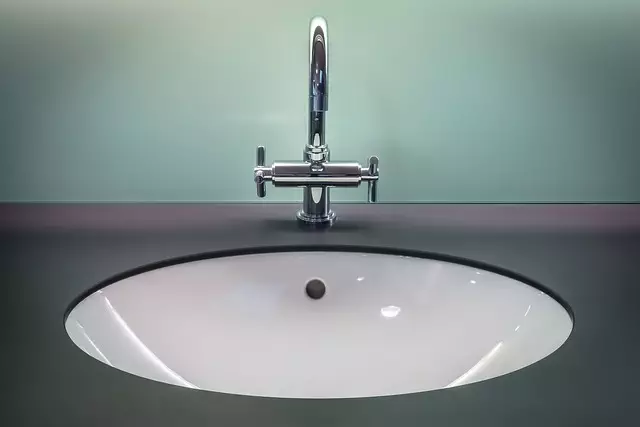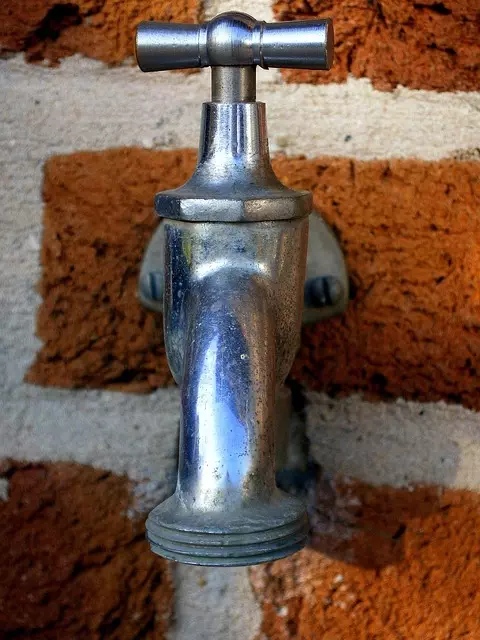This guide covers faucet repair basics, from simple replacements for minor leaks and clogs to professional cleaning or part replacement for severe cases. It outlines a step-by-step approach for basic repairs, emphasizing the importance of understanding common issues like worn O-rings or washers. Modern technologies enhance efficiency, while regular maintenance, including weekly inspection and lubricant application, prevents costly repairs. Selecting quality parts is crucial for long-lasting fixes.
Faucet leaks, clogs, and other issues can disrupt your daily routine. Understanding common problems is the first step towards effective repair. This guide delves into various aspects of faucet repair, from basic DIY solutions for leaks and clogs to recognizing when professional help is needed. We explore modern technologies, tips for choosing replacement parts, and preventive measures to keep your faucets in top condition. Stay informed with these reliable faucet repair solutions.
Understanding Common Faucet Issues: Leaks, Clogs, and More

Faucet issues are common problems that every homeowner faces at some point. Understanding these basic problems is the first step towards effective faucet repair. Leaks, for instance, are one of the most frequent concerns, manifesting as dripping water at the base or around the handle. This issue could stem from worn-out O-rings or washers, which are easy to replace.
Clogs are another frequent faucet repair need. A slow-draining sink or a faucet that sputters when you turn it on is usually caused by accumulated debris or mineral buildup in the pipes. These clogs can be addressed using basic tools and a bit of patience, but more severe cases might require professional intervention for thorough cleaning or replacement parts.
Steps for Basic Faucet Repair: A Do-It-Yourself Guide

Facing a leaky faucet? Don’t panic! Many common faucet repairs can be easily accomplished with just a few simple tools and some know-how. Here’s a step-by-step guide for tackling basic faucet repair on your own. Start by turning off the water supply to your faucet. This is usually done by twisting the valves under the sink counterclockwise until they stop. Next, remove the faucet handle and any decorative covers. Depending on your faucet’s age and design, this might involve unscrewing a few screws or lifting out a portion of the handle assembly.
Once exposed, you should see the cartridige or washer that’s causing the leak. Carefully dislodge it, taking note of how it was installed, and replace it with a new one if necessary. Washers and cartridges are commonly replaced parts for leaky faucets. After installing your new part, reattach the handle and any covers, ensuring everything is securely fastened. Finally, turn on the water supply and test your repairs.
When to Call in a Professional Plumber for Faucet Repairs

If you’ve tried basic troubleshooting techniques, such as tightening the faucet handles or replacing the washer, and the problem persists, it’s time to call in a professional plumber for faucet repairs. Leaks that won’t stop, water that drips uncontrollably, or faucets that sputter and make strange noises are all signs that you need expert help.
Professional plumbers have the tools and expertise to diagnose complex issues with your plumbing system. They can identify whether the problem lies in the faucet itself, the supply lines, or even the pipes beneath your sink. Prompt attention from a skilled plumber can prevent minor issues from turning into costly and extensive repairs down the line.
Modern Technologies and Innovations in Faucet Repair Solutions

Modern technologies have significantly enhanced the landscape of faucet repair solutions, offering more efficient and effective methods to address common issues. One notable innovation is the introduction of advanced diagnostic tools that use sensors and smart algorithms to identify problems within a faucet’s mechanism. These tools provide precise information about the issue, enabling repair technicians to quickly determine the best course of action. This reduces the time spent on troubleshooting and minimizes the risk of further damage.
Additionally, new materials and designs have revolutionized faucet repair. Engineers now develop durable and long-lasting components, making it easier to replace specific parts without having to install entirely new fixtures. 3D printing technology has also made customization more accessible, allowing for the creation of tailored solutions for unique faucet models. These innovations ensure that even the most complex faucet repair jobs can be completed promptly and with greater precision, ultimately providing homeowners with reliable and efficient water control systems.
Choosing the Right Replacement Parts for Your Faucet

When tackling a faucet repair, selecting the correct replacement parts is paramount to ensure a successful and lasting fix. The first step is to identify the specific parts that need replacing – this could range from O-rings and washers to cartridge assemblies or even the entire faucet mechanism itself. Understanding your faucet’s make and model can greatly aid in this process. Many modern faucets come with universal parts, making replacement easier, while antique fixtures might require more specialized pieces.
Researching online or consulting a hardware store expert can help you choose the right parts. Look for reputable brands known for their quality and compatibility with various models. Always check the product description and reviews to ensure the parts will fit your faucet seamlessly. The right replacement parts not only guarantee a smooth repair but also extend the lifespan of your faucet, saving you from future repairs and ensuring reliable faucet operation.
Preventive Measures: Tips for Maintaining Your Faucets

Regular maintenance is key to preventing faucet repairs. Start by checking your faucets for any signs of leaks or drips on a weekly basis. Even minor issues can escalate into significant problems over time, leading to costly repairs. Addressing them early can save you money and minimize water waste.
Keep an eye on the faucet’s components too. Inspect the washer, O-ring, and cartridge for wear and tear. Replace these parts if necessary to maintain proper functionality. Additionally, applying a thin layer of grease or lubricant to the faucet’s moving parts can help reduce friction and prevent premature damage, ensuring smooth operation for years to come.
